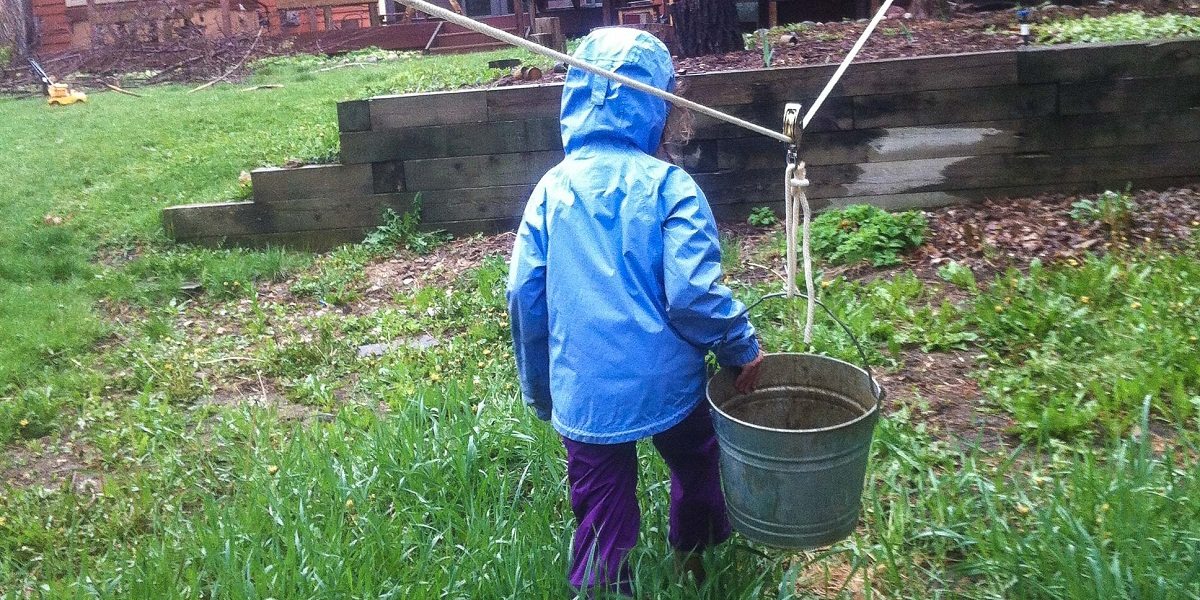
This book by Jason Runkel Sperling addresses many of the anxieties and wishes we as parents have for our children: how to engage them in great play sessions, with minimum materials and lots of fun involvement. Also, it will make your backyard a haven for fantastic ideas and lots of pleasurable family play time.
You know how it is: after buying yet another new toy you expect will last for a lifetime, that takes ages to put together and that has been received with squeals of joy and excitement, you find that it only took a few days for the novelty to wear off, and that yet another expensive thing is propped up with no use in your kids play room. I have tons of those, and usually they get sent to charity as soon as the kids have forgotten all about them. Finding this book made me fall in love with the Internet all over again: so many shared ideas and feelings are in these pages that you will find yourself taking notes and underlining almost every single phrase.
This super dad wants what we all want, and I quote: “I’m talking about real value here – toys that get epochs of play time. Good play that enriches their development. Toys and play that stir their imaginations and provoke beautiful social interactions. The kind of moment you want to take videos and photos of, post to Instagram and Facebook instantly, and treasure forever.”
As his massive research will tell you, children of the Twenty First century spend more time indoors, glued to screens, and are less active and free to roam than in any time in history. You may already want to get your children to play outside, but fail to motivate them, and/or are afraid of getting them hurt. However, the good old “go outside and play,” should still be an option, especially if you have your own backyard.

Sperling has six very definite statements about play:
• The dominant culture of mass-produced and marketed toys is new
• Young children’s capabilities are far-reaching, and we are over protecting them.
• Play, and especially risky play, is vital to children’s growth.
• There isn’t a good guidance for parents in how to take part in children’s play.
• Questioning the status quo is confronting and challenging, but critical.
• The setup in our homes greatly determines children’s play opportunities and outcomes.
For his proposal for play revolution, he suggests three important areas: Loose parts, Adventure Play Grounds and Playwork.
Loose parts are open-ended materials that children can manipulate on their own, are interoperable and, by definition, have no fixed purpose. Here on GeekDad we talked about them: sticks, mud, and other seemly odd junk that can be found lying around, and is often rated as the best thing to play with. Forget about branding and collecting, these are organic materials you can easily find in recycled shops and other such places around the country.
Adventure playgrounds are a specific type of play ground with equipment, materials, objects and environments that children can manipulate and interact with through child-led activities. In Europe you can even find them built specifically for out-door play (in America, not so much). However, the basic idea is that whatever play that will ensue will be safe from a counterintuitive point of view: it will all be on ground-level as to diminish hard falls, and with things kids can manipulate with almost no adult supervision.
Playwork is a formalized theory and practice of creating and maintaining spaces for children to play in. In them, parents usually are just enablers, where kids can follow their own agendas and not adult ones. You can (upon request) act as a character in children’s role-playing or introduce new ideas through questions and briefly modeling play behavior, but children’s imaginations and initiative are crucial.
Sperling has scores of suggestions for these three areas, and he gives them in abundance. He gives you materials, play ideas and much, much more. As I pass through my notes (and this is a heavily underlined book), I see I’ve just started covering what his ideas are all about.
But I don’t have to spell them out for you, since his material is so readily available. Go buy his books. Visit his website. Share your own findings. And may Play Time be special for both you and your children from now on!
Disclosure: I was given a copy of this book for review purposes, and I’m grateful for that!


